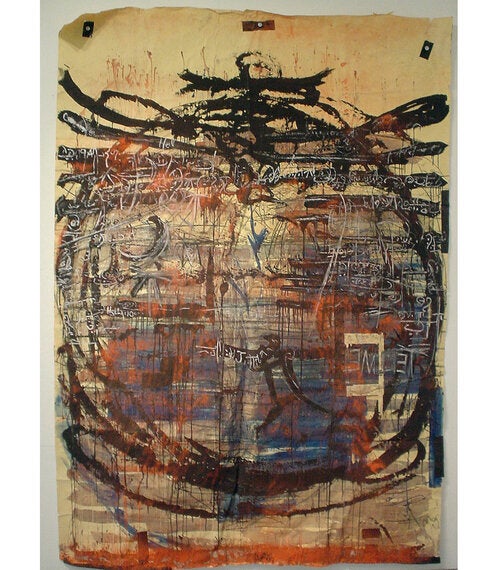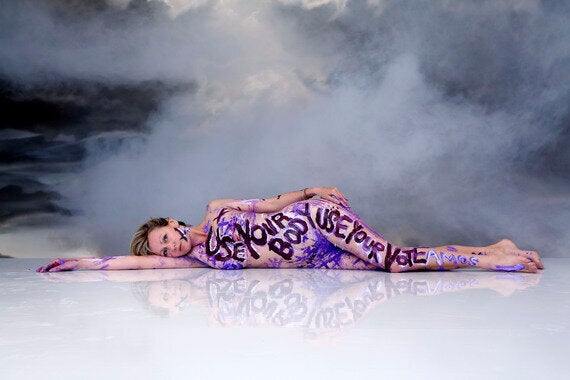Artist, celebrity or star - is there a point in being a famous artist? Not unless you want to make money, and even that isn't guaranteed. The art market is all about money, and increasingly about PR, cross-branding, and combining art in a cross-collaboration between artist and luxury branding. Today, many works of art are mass produced in a factory where the artist is no longer involved in the process. The art market is a huge business, and much of the work the public can see is what they're allowed to see. The high end of the cultural industry is organised by people with money and censored by market forces. Someone with wealth and connections, or a gallery that can afford a PR agency has to open the door for the working class, female, black, and transgender artists. Nowadays, work alone is not enough, and artists have to work hard and make use of the system that has developed and exploit it for what it is.
In the past, I used the system and gained attention through stunts. In 2005, I exhibited a painting called 'Opera Paese' in London at Home House Members Club. The price of the work was £1.3m. At the time, the art market was going crazy with huge prices from relatively unknown artists. Brian Sewell, leading established art critic in London, sent me a handwritten letter telling me I had no right as an unknown artist to claim the £1.3m price. This provocation worked, launching me and my work into the next phase.

Many artists have used stunts to gain attention. For example, Christo caused a blockade with oil barrels in 1962 in a Paris street, which claimed the front page the following day. It is essential for artists have to promote themselves or they will sit with their work in a vacuum. In 2009, I was asked by Jenni Murray of BBC Radio 4 if I was presenting myself as a sexual object during my naked performance where the audience paints my body. I replied, "No, I am asking the audience to see a person," but the truth is, the naked female body gains attention. It worked, as I knew it would. Being naked was an important part of the work, making it about vulnerability and trust. The fact that I was a young, female artist putting my body on display warranted an image in The Times. The image was extremely popular, and more commissions followed. My naked body performance was used in the 2010 General Election campaign in the UK, as a way of encouraging first time voters to 'Use Your Body Use Your Vote.' The results were impressive: Stephen Fry tweeted about it, 6 million people saw it, and it was written about in the press.

Art history has mostly ignored women, black artists and transgender artists. So, it comes down to doing what you have to do to break through. I can't change the sexist and racist academic discourse, but I can make use of the system that is in place. Artists have to be smarter than the people who are controlling the system and standing to make a profit.
Cultivated ignorance spread by media, coupled with fast tracked fame seeking artists, has reduced the ability for artists and viewers to take the time to ponder over the work. Social media has made tabloid sensationalism a norm. Society is seeing the triumph of the superficial, and we, the over sensationalised, are out. The phase of gimmicks and shock factors is hopefully coming to an end, which will leave quality of work in at centre stage. If you're looking for a reminder of what quality looks like, all you need to do is stand in front of Leonardos 'Virgin of the Rocks' or any of Francis Bacon's triptychs.
The quality of work and the ideas behind it are all the work of the artist. Daring artists are being praised, as Graffiti art, started in the 90s, is now a mainstream activity recognised by galleries, art colleges and absorbed into the everyday. Today, artists have to be ten jumps ahead, constantly coming up with new and innovative ideas, not just stunts, gimmicks and celebrity stamped photographs. The internet has reduced the turnaround time of images causing work to disappear quickly. In today's world, a career can be launched and ended all in a day. On the art timeline, and in years to come, it will be interesting to see who and what sticks.
Being an artist is enough in itself, and artists are lucky to be able to use their time to create. My stunts used to promote paintings and performances have come from my rebel spirit. Making my work is the most important thing, and being able to get my work out there and doing so against all odds has been the most satisfying part of my career.